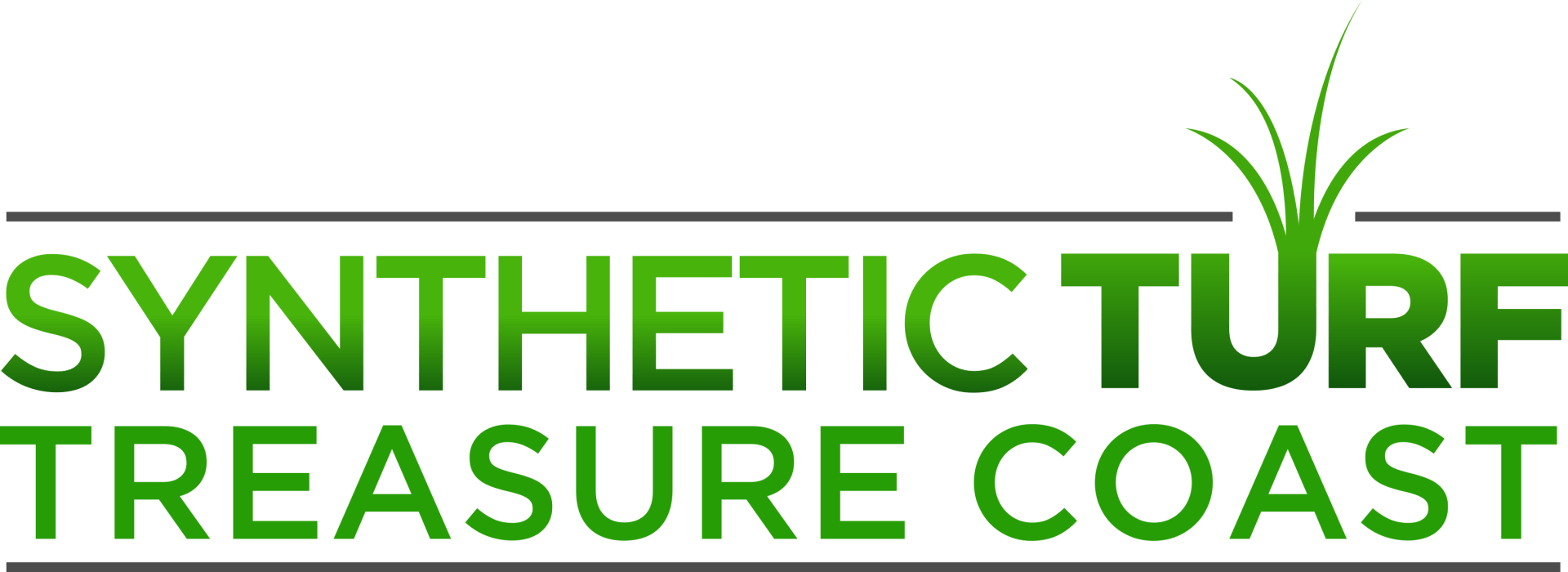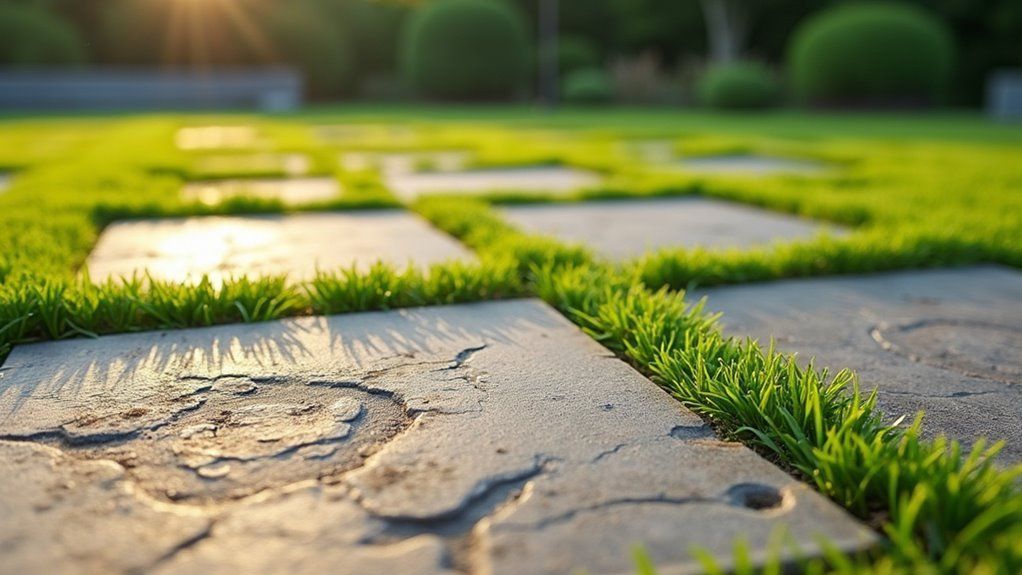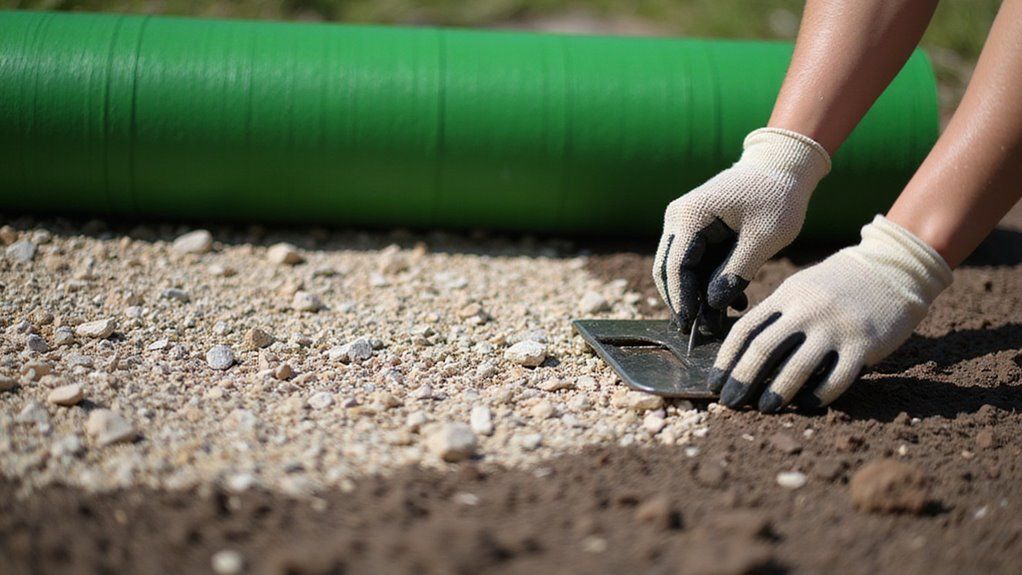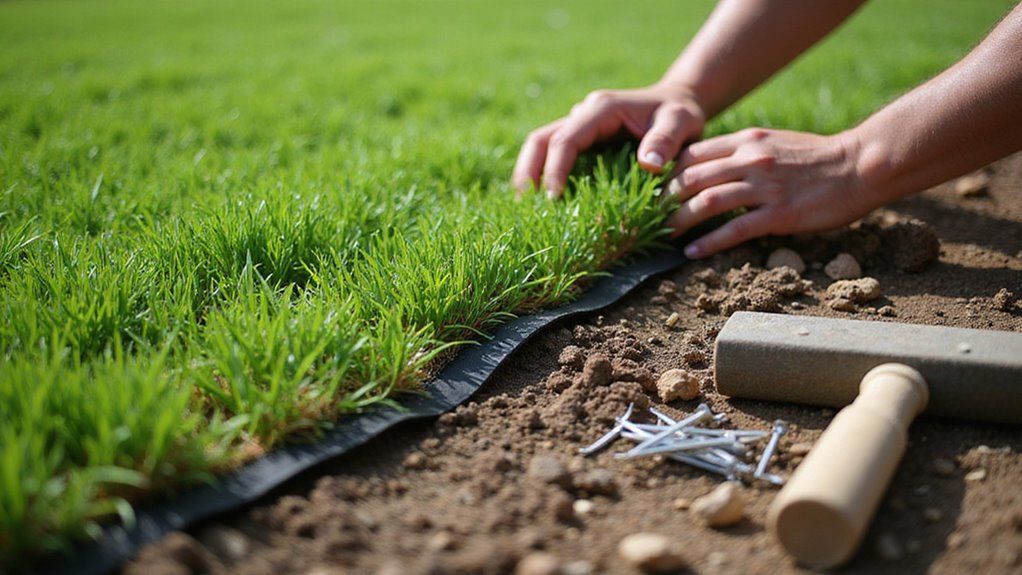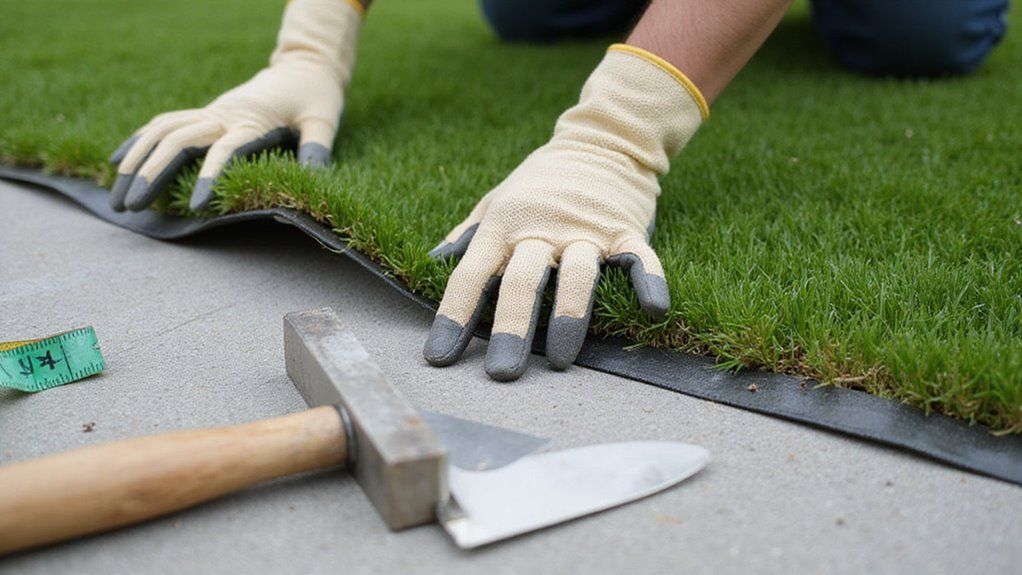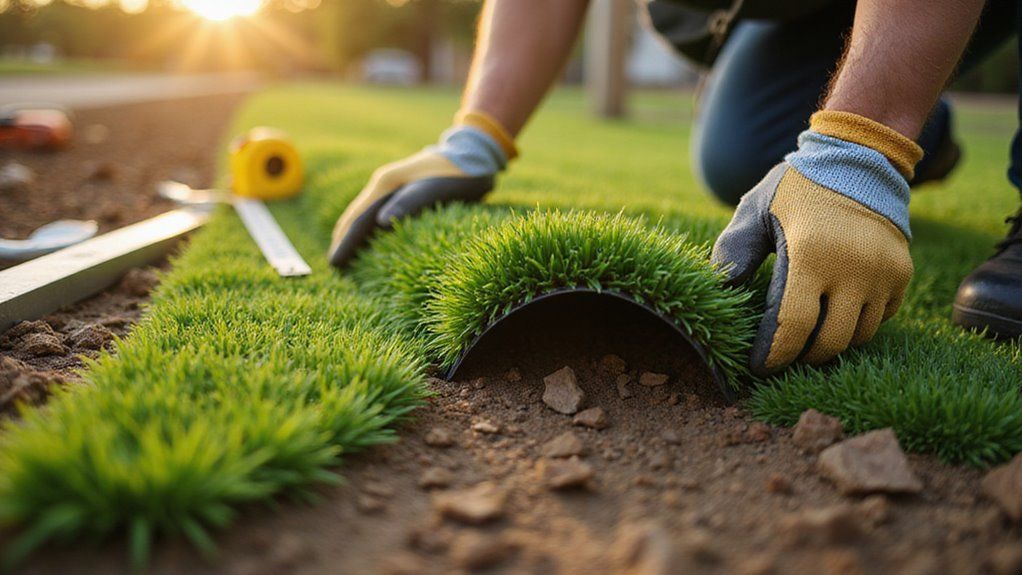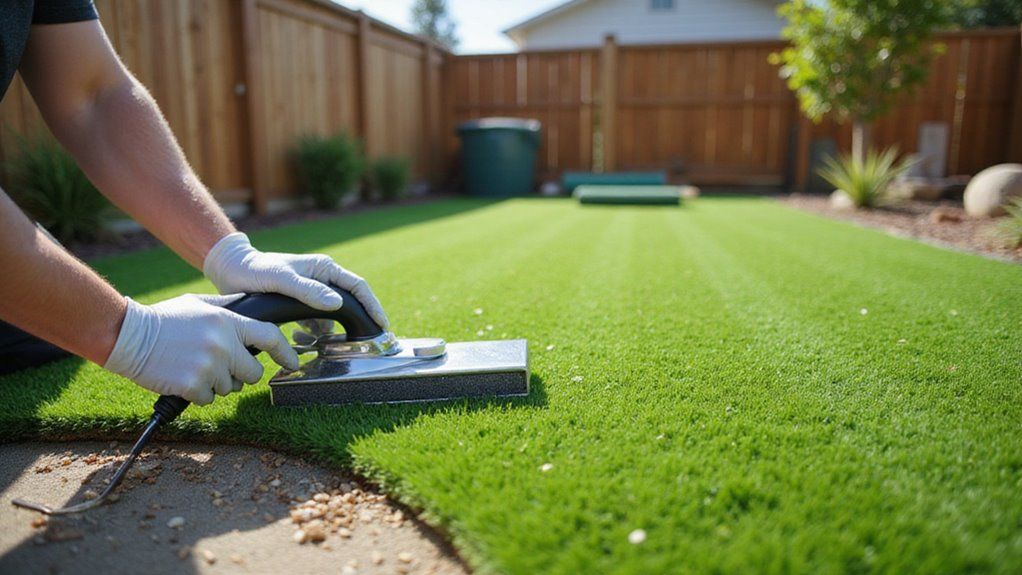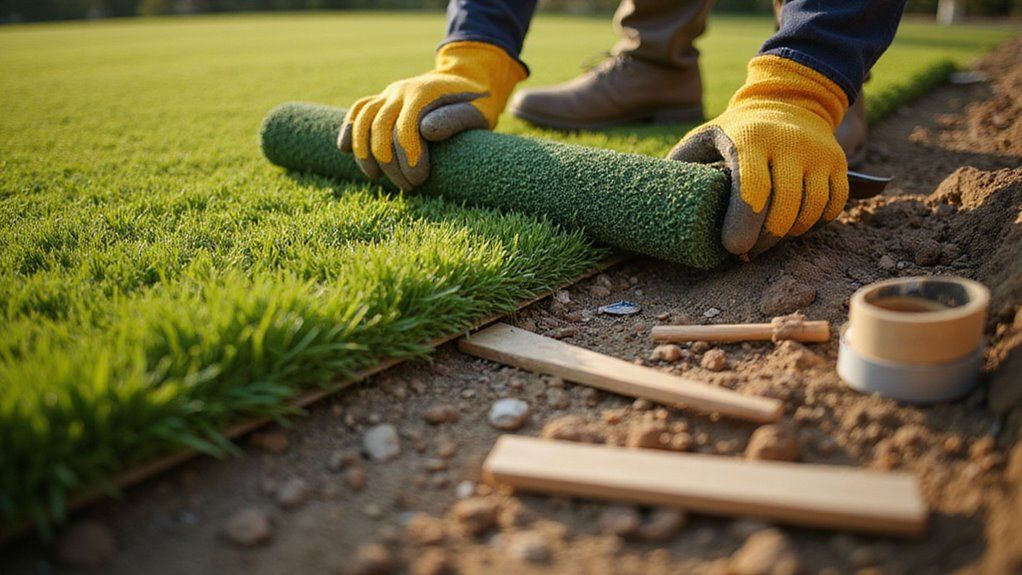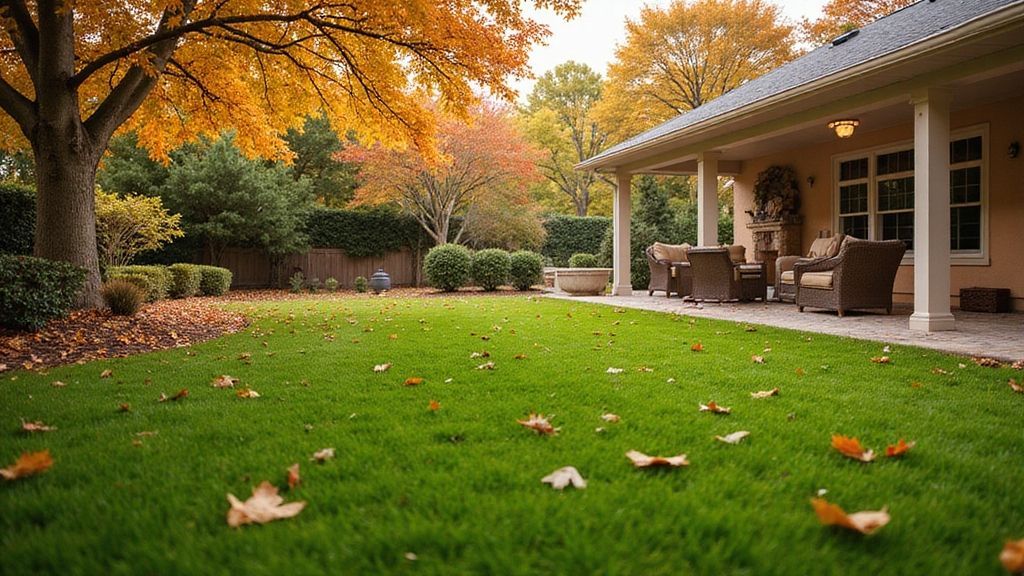Adding Value to Your Home with a Low-Maintenance Synthetic Turf Lawn
Let's face it: keeping a natural grass lawn that looks lush and green can feel like a never-ending battle. You spend your weekends wrestling with a lawnmower, battling weeds that seem to sprout overnight, and hoping the sprinklers haven't left giant puddles or forgotten a whole corner of the yard. And forget about enjoying your beautiful lawn after a hard day's work – who wants to relax when there's a mountain of yard work staring you down?
There's a reason why artificial grass has become so popular – it offers a stunning, green solution to these lawn woes.
While it requires less maintenance than a traditional lawn, some artificial grass maintenance is needed to keep turf lawns looking their best for as long as possible. Artificial grass is a great landscaping option for homeowners who want to avoid the constant upkeep of a natural grass lawn. While it is lower maintenance than a traditional lawn, some artificial grass maintenance is needed to keep turf lawns looking their best for as long as possible. Learn how to maintain artificial grass with these eight easy tips. (1)
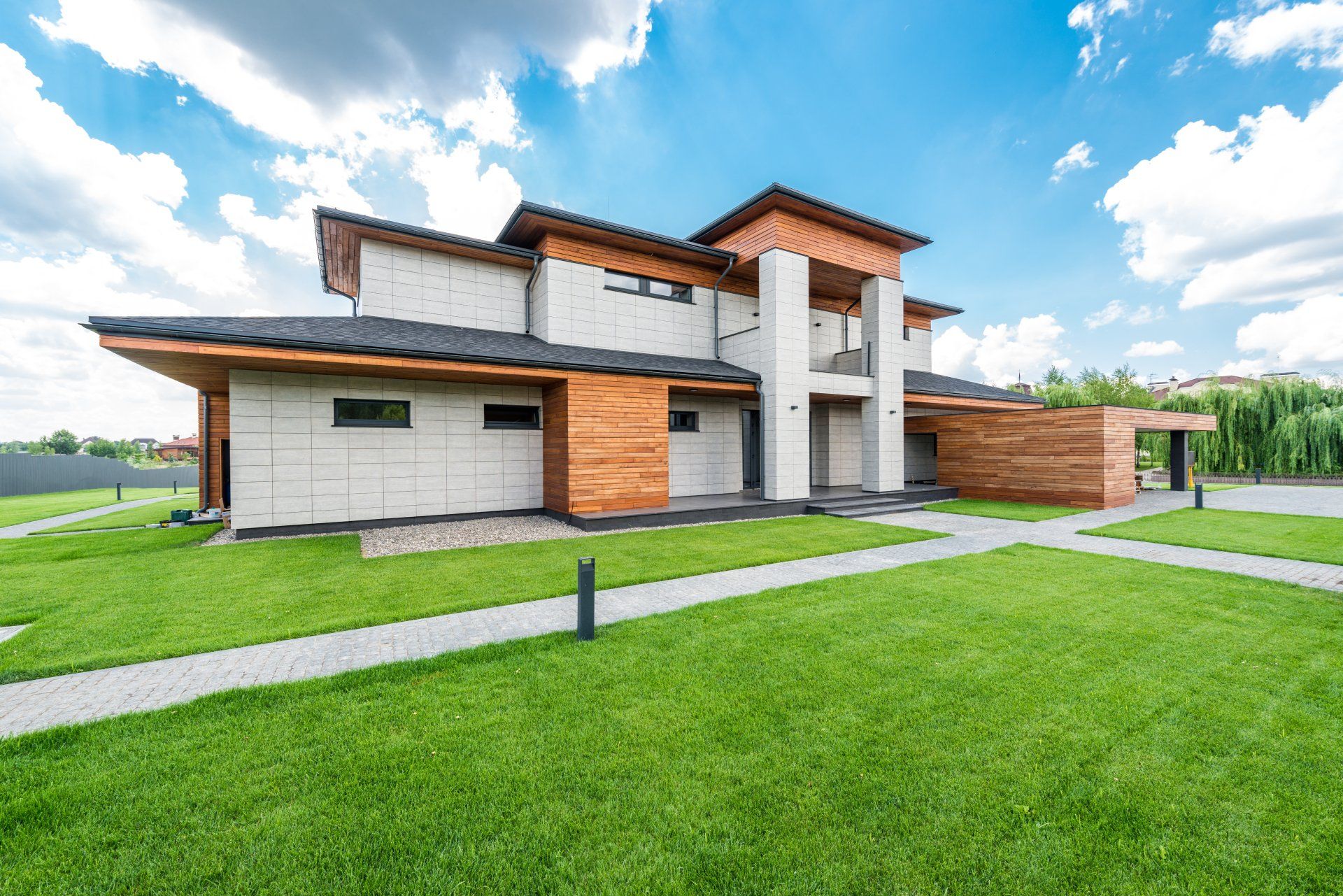
Keep It Clean
Over time, artificial turf can accumulate debris, leaves, and other organic matter, detracting from its appearance and potentially causing issues like discoloration or mold growth. Without regular cleaning, your turf may lose its visual appeal and become a breeding ground for bacteria.
Regular cleaning is essential for artificial turf maintenance. Use a leaf blower, rake, or stiff brush to remove debris and organic matter from the surface of the turf. This prevents buildup, allowing water to drain efficiently and reducing the risk of mold growth. For spills or pet messes, promptly clean the area by hosing it down and using a mild detergent if necessary.
Brush It Up
With regular use, the fibers of artificial turf can become flattened and matted, diminishing its natural appearance and comfort underfoot. Heavy foot traffic, furniture, or other objects can exacerbate this issue, leading to a worn-out look and reduced longevity.
Regular brushing is vital to maintaining the resilience and aesthetic appeal of your artificial turf. Using a stiff brush or broom, gently agitate the fibers by brushing against the grain. This action helps to lift flattened fibers, restoring their natural bounce and appearance. Focus on high-traffic areas where matting is more likely to occur, such as pathways or play areas.
Handle Stains Promptly
Accidental spills or pet messes can leave unsightly stains on your artificial turf if not addressed promptly. These stains can detract from the appearance of your lawn and may become more difficult to remove over time, potentially leading to permanent discoloration.
Start by blotting the affected area with a clean fabric to absorb as much liquid as possible. Then, rinse the area thoroughly with water to dilute the stain. For tougher stains, such as those caused by oil or grease, use a mild soap solution and carefully scrub the area with a gentle brush.
Control Weeds
While artificial turf eliminates the need for mowing and weed pulling, weeds can still infiltrate the edges or seams of your lawn over time. These unwanted plants detract from the overall appearance of your turf and may require ongoing maintenance to keep them in check.
Install a weed barrier beneath the turf or use a weed killer as needed to inhibit weed growth. Regularly inspect these areas for any signs of weed intrusion and address them promptly. Additionally, consider using a trimmer or sharp knife to remove any overgrown vegetation along the edges of your turf.
Watch Out for Hot Spots
Artificial turf can absorb heat and become uncomfortably hot to the touch on sunlit days, especially in warmer climates. This can make it unpleasant to walk or play on and may even pose a risk of heat-related injuries, particularly for children and pets.
To prevent hot spots on your artificial turf, take steps to keep it cool and comfortable, especially during the hottest times of the day. Consider watering your artificial grass Florida before use to help dissipate heat and reduce surface temperature. Alternatively, install shade structures or use turf products with built-in cooling technology to mitigate heat absorption. If your turf becomes too hot to touch, avoid prolonged exposure and consider providing alternative play or relaxation areas during peak heat hours.
Trim Around Edges
Vegetation such as grass, weeds, or plants may encroach on the edges of your artificial turf over time, detracting from its neat appearance. If left unchecked, this overgrowth can create a messy border and may even cause damage to the turf fibers.
Use a trimmer, sharp knife, or shears to carefully cut away any overgrown grass, weeds, or plants along the perimeter of your lawn. Pay close attention to areas where vegetation may be creeping onto the turf surface, such as flower beds or garden borders. By keeping the edges neatly trimmed, you can enhance the visual appeal of your turf and prevent debris accumulation, prolonging its lifespan in the process.
Schedule Regular Inspections
Over time, artificial turf may experience wear and tear, leading to issues such as loose seams, tears, or areas of heavy wear. If left unchecked, these issues can worsen over time, potentially compromising the integrity and longevity of your turf.
Scheduling regular inspections by artificial turf maintenance service providers allows you to identify and address any issues with your synthetic turf before they escalate. Conduct thorough inspections of your turf, paying close attention to seams, edges, and areas of heavy foot traffic or use. Look for signs of damage, such as loose seams, tears, or discoloration, and take prompt action to address them.
Maintain Proper Drainage
Insufficient drainage can lead to water pooling on the surface of your artificial grass in Florida. This can cause issues such as mold growth, odors, and even damage to the turf backing. This can occur due to improper installation, compacted infill, or clogged drainage holes.
Confirm that your turf is installed correctly and that a suitable base and drainage system are in place. Regularly inspect the turf and infill for signs of compaction, and fluff up the infill if necessary to improve drainage. Additionally, clear any debris or organic matter from the turf surface and drainage holes to prevent clogs.
About the author
Kathy Leavell
Kathy Leavell is the founder and owner of Synthetic Turf Treasure Coast, a leading provider of synthetic grass solutions for residential and commercial properties in Florida. With over a decade of experience in the industry, Kathy has become a recognized expert in synthetic turf installation, maintenance, and repair. Under her leadership, Synthetic Turf Treasure Coast has earned a reputation for exceptional customer service and high-quality workmanship.
Prior to starting her own business, Kathy worked in sales and marketing roles at several major synthetic turf manufacturers.
